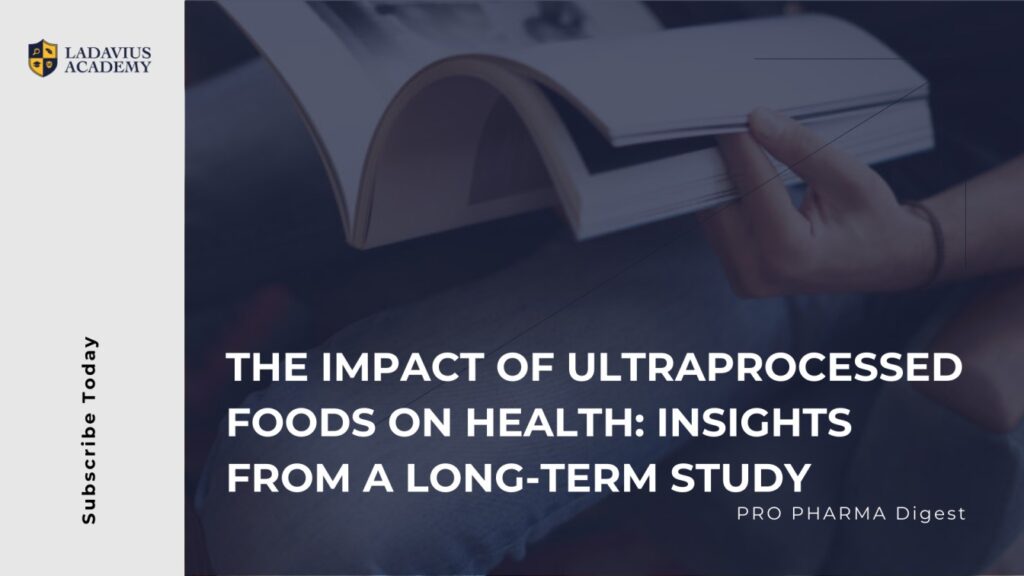A review published in February 2024, involving experts from institutions like Johns Hopkins Bloomberg School of Public Health and the University of Sydney, analyzed data from over nine million participants. The study found direct links between ultraprocessed food consumption and 32 health parameters, including mortality, cancer, and various mental, respiratory, cardiovascular, gastrointestinal, and metabolic issues. In 2010, Dr. Carlos Monteiro, a Brazilian epidemiologist from the University of São Paulo, gained international recognition for creating the NOVA classification. Even though it wasn’t initially based on strong scientific evidence, NOVA introduced the important idea of ultraprocessed foods. This concept has had a big impact on nutrition and public health and has caused concern in the food industry.
Understanding the NOVA Classification
During the International Congress on Obesity held in São Paulo, Dr. Monteiro presented compelling evidence supporting the NOVA classification. Joining him was Dr. Kevin Hall, a Canadian researcher from the National Institute of Diabetes and Digestive and Kidney Diseases in Maryland, whose initial skepticism about Monteiro’s ideas fueled his own research.
Dr. Monteiro explained that the NOVA classification categorizes foods based on their level of processing. The categories are:
- Unprocessed or Minimally Processed Foods: Such as bagged beans and pasteurized milk.
- Processed Culinary Ingredients: Including butter, olive oil, and sugar.
- Processed Foods: Such as canned vegetables, jams, and tomato paste.
- Ultraprocessed Foods: Products resulting from extensive processing, like sodas, cookies, and frozen pizzas.
“Ultraprocessed foods are designed to replace fresh meals, not to provide necessary nutrients or enhance sensory qualities,” Monteiro explained. These foods undergo various industrial processes like hydrolysis, hydrogenation, and extrusion, and are often enhanced with cosmetic additives to improve palatability and shelf life. These processes significantly affect the food’s quality and health implications.
Long-term Study on Ultraprocessed Foods
A systematic review published in February 2024, involving experts from institutions like Johns Hopkins Bloomberg School of Public Health and the University of Sydney, analyzed data from over nine million participants. The study found direct links between ultraprocessed food consumption and 32 health parameters, including mortality, cancer, and various mental, respiratory, cardiovascular, gastrointestinal, and metabolic issues.
Additionally, Monteiro presented his own study, under peer review, revealing that ultraprocessed foods contribute to nearly or over half of the caloric intake in developed countries such as Canada, the United States, and the United Kingdom. Middle-income countries also show significant, though smaller, consumption rates, which are rising steadily.
The study, analyzing data from 93 countries over 15 years (2007-2022), highlighted a steady increase in ultraprocessed food consumption, especially in low- and middle-income countries. High-income countries displayed a stabilization trend due to a decrease in sugary drink sales, countered by a rise in other ultraprocessed foods. In China, ultraprocessed food consumption tripled, while Brazil, Mexico, Korea, and Spain saw two- to threefold increases.

Health Risks and Addictive Nature of Ultraprocessed Foods
Monteiro also discussed a study indicating that individuals consuming diets rich in ultraprocessed foods tend to intake significantly more calories—often over 5000 per day—leading to weight gain. The hyperpalatability and high caloric density of these foods are major contributors. Ultraprocessing also depletes beneficial phytochemicals and introduces harmful chemical contaminants like acrylamide and bisphenol.
Furthermore, about 14% of adults and 12% of children in the United States exhibit signs of addiction to ultraprocessed foods, exacerbated by aggressive marketing strategies. Despite the extensive data, Monteiro emphasized the need for more research, particularly in low-income countries and regarding total exposure to additives.
Proving the Concept through Rigorous Testing
Dr. Hall initially approached the ultraprocessed food concept with skepticism, driven by strong criticisms. However, his rigorously designed experiments at the NIH Clinical Center, involving 20 participants with stable weight, led to surprising findings. The study, published in Cell Metabolism, revealed a 500-calorie per day difference in energy intake between ultraprocessed and minimally processed diets, confirming that ultraprocessed foods contribute to weight gain.
Strategies to Combat Ultraprocessed Food Consumption
Monteiro proposed a multifaceted approach to tackle the consumption of ultraprocessed foods, akin to anti-tobacco strategies. These include public health campaigns, visible warnings on packaging, restricting advertisements, eliminating sales in schools and healthcare facilities, and imposing significant taxes on these products. The revenue from these taxes could subsidize fresh and minimally processed foods.
Conclusion
Monteiro remains hopeful that regulatory pressure and rising healthcare costs will eventually compel the food industry to change. However, he stressed the urgency of addressing this issue promptly to minimize long-term health damage. “This will be resolved, but we want it to be resolved as soon as possible,” he concluded.
For more detailed information, please visit: Ultra-processed food exposure and adverse health outcomes: umbrella review of epidemiological meta-analyses
Posted July 2024.
Subscribe to our newsletter
Personalised by your preferences, subscribe to our newsletters to get the best of the Pharmaceutical Industry news in your inbox.
